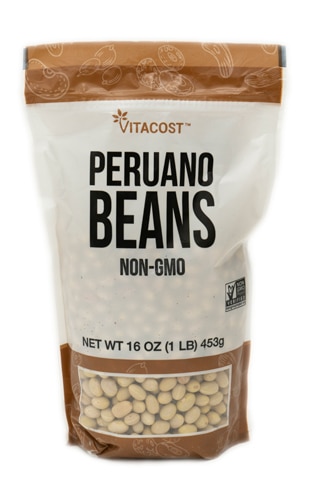What if we told you that no matter where you live, you can easily grow nourishing, protein-rich food within a few days. Think it’s too good to be true? Think again. This simple method is highly versatile, reduces kitchen waste, requires neither soil nor sunshine and costs mere pennies per serving…
Welcome to the world of sprouting
All plants start as a sprout. Sprouts are nutritionally dense superfoods bursting with live enzymes, which are formed through the simple, natural process of germination. This activates the life force of dormant seeds, beans, nuts and legumes, nutritionally maximizing the protein, vitamins, minerals and phytochemicals they contain.
We can benefit from the wisdom of traditional cultures, where folks have been soaking and drying nuts, seeds and grains for thousands of years to make them more digestible and increase their bioavailability—the degree to which nutrients are available for absorption and utilization in the body. Here are a few additional reasons and helpful tips to get you motivated:
1. Sprouts outsmart anti-nutrients
All grains, legumes, nuts and seeds in their dormant state contain “anti-nutrients,” compounds that impede digestion, inhibit the functions of vital enzymes and deprive the body of important vitamins and minerals. Take enzyme inhibitors, for instance, which bind with vital nutrients so our cells can’t effectively absorb them. (Read: 5 Factors that Negatively Affect Nutrient Absorption) Other examples include phytic acid, lectins, gluten and tannins.
Along with blocking the absorption of vitamins and minerals, these compounds can irritate the intestinal tract, triggering nutritional imbalances, and even predispose us to chronic digestive disorders over time. Fortunately, soaking and spouting largely neutralizes anti-nutrients, while optimizing the nutritional value of nuts, seeds, grains and legumes.
2. High-quality, easy-digesting protein
While all nuts, seeds, grains, beans and legumes serve up important amino acids, sprouting improves their protein quality by increasing the amount of lysine they contain. As authors Brenda Davis, RD and Vesanto Melina, MS, RD explain in their book Becoming Raw, lysine is the specific essential amino acid most plant foods fall short in, or the “limiting amino acid,” meaning there is too little to qualify the food as a “complete” protein.
When seeds, nuts, beans and grains are sprouted, however, the reserve protein they contain in storage is broken down into amino acids, with additional conversion to lysine. Soaking and sprouting also makes protein significantly more digestible—by 25 percent or more, according to studies done on peas and buckwheat.
3. Excellent low-calorie nutrition
During the sprouting process, not only does protein increase, but the nutrient profile of the food as a whole multiplies. Additionally, calories are actually reduced, partly because sprouts have a high water content. For example, sprouted lentils—an exceptional source of iron, among other benefits—contain just 82 calories per cup, while a calorie-matched serving of dried lentils is a mere two tablespoons, which expands to about one-third cup when cooked.
Most sprouts weigh in at about 80 calories a cup, while delivering a plethora of vitamins, minerals, fiber, easy-digesting protein, active enzymes and more. Sprouts are a beautiful example of making your calories count, rather than counting them!
4. How to use your own fresh sprouts
When you have sprouts on hand, you’re all set with a handy, protein-rich component to fill out healthy snacks, salads, entrées, appetizers, sandwiches and more. Ever-versatile bean and lentil sprouts are especially delicious marinated overnight in lemon juice, olive oil and a hint of maple syrup. Here are some great ways to use those vibrant sprouts:
- Make a salad: Add a handful of sprouted beans or legumes to a bowl of colorful veggies, avocado and creamy dill dressing.
- Prepare a pilaf: Try sprouted or “bloomed” wild rice, which is actually a protein-rich seed rather than a grain. This requires just a 48-hour soak to make rice yummy and chewy, as if cooked “al dente.” Drain well, and toss with dried cranberries, chopped carrots, celery, raw pecans and a rich, fruity sunshine citrus dressing.
- Try Tex-Mex: Just as you would with cooked beans, use sprouted beans and legumes in dips, tacos, burritos and more for a fresh new taste experience and a generous hit of protein.
- Stack (and roll) your sprouts: Sandwiches and wraps are ideal vehicles for sprouts, which complement other fillings like avocado, tomato, shredded carrot, cucumber, homemade hummus, etc.
- Add balance to bowls: Garnish grain and seed bowls with sprouted beans for a fresh, crisp flavor like in our Lemon-Herb Quinoa with Sprouted Chickpeas.
- Spruce up soup: Sprouts are smashing toppers for soups, stews, chili and more.
As you can see, sprouts are nothing short of nutritional royalty with a veritable cascade of benefits, so why not take advantage of them, starting now? Bon appétit!
Sold on sprouts? Try a Lunch in a Jar: Mayo-Free Asparagus & Mung Bean Sprout Pasta Salad.




